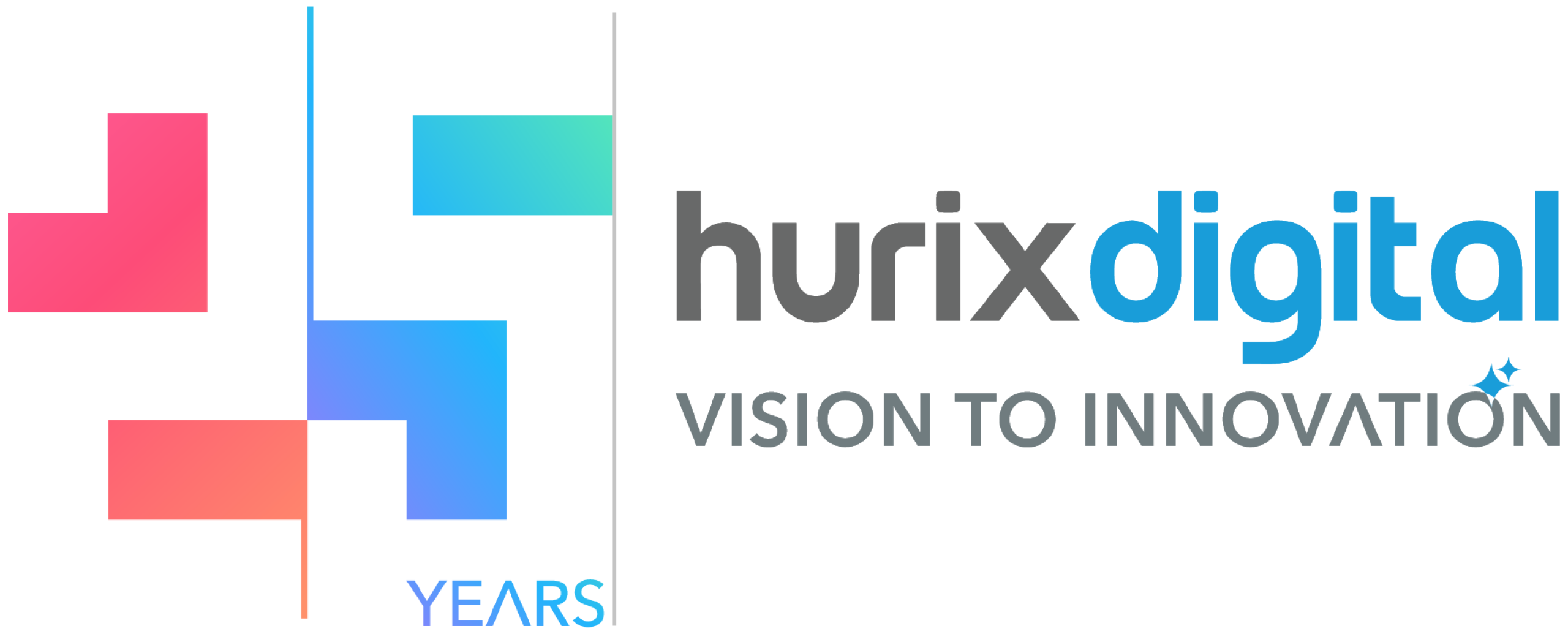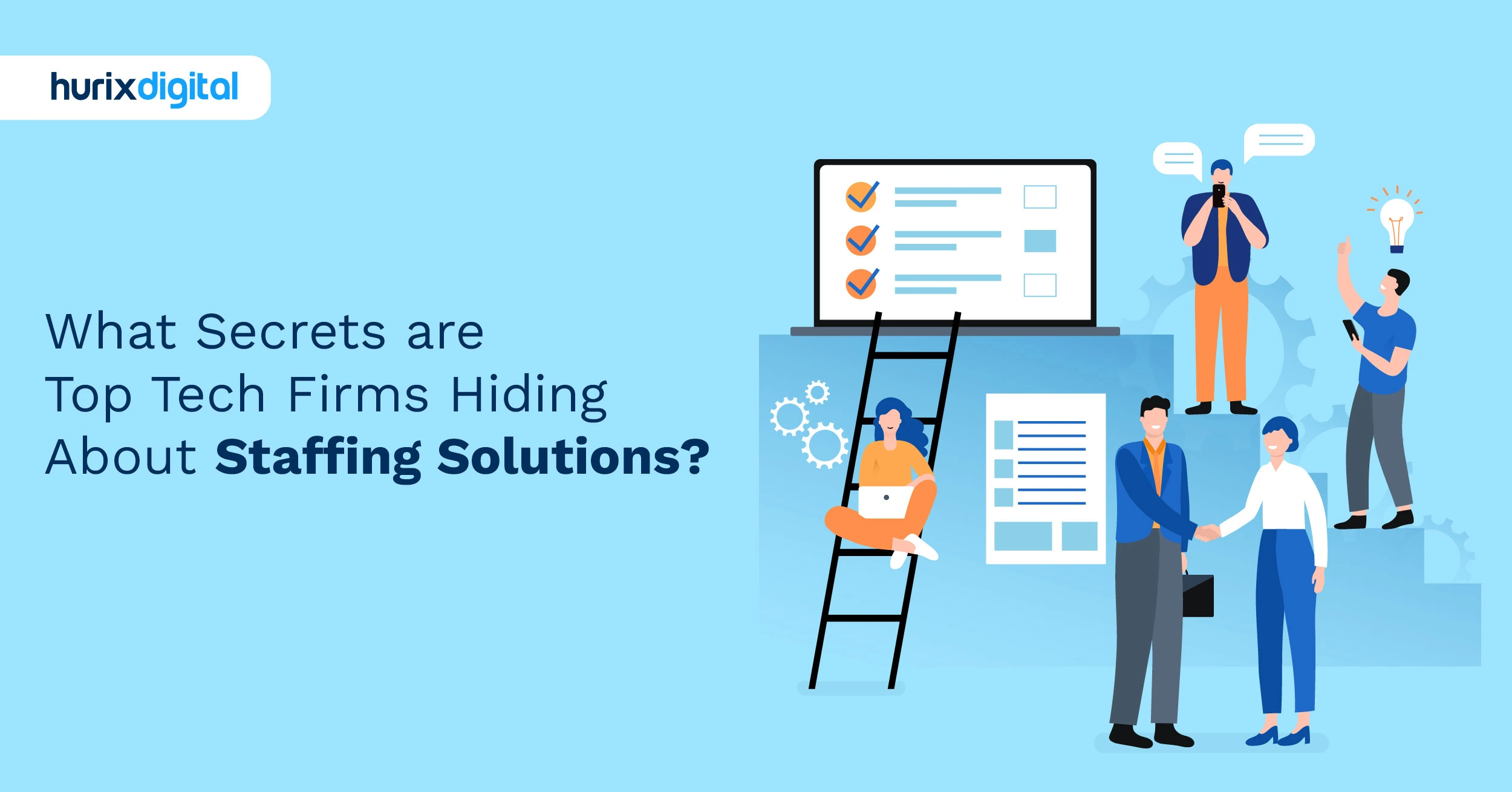
Ravi Sharma
September 30, 2025
Why Is Everyone Suddenly Talking About IT Staff Augmentation?
A friend called me last week. His company just lost three developers to Meta, and he’s panicking about a product launch in four months. “Should we try staff augmentation?” he asked. I laughed. Not because it’s funny, but because five years ago, the same guy told me augmentation was “just glorified outsourcing for companies too cheap to hire properly.”
Talent bleeding causes things to change quickly. See, that’s the thing about IT staff augmentation services in 2025. Everyone has opinions about it until they actually need it. Then suddenly all those philosophical debates about “core competencies” and “organizational culture” take a backseat to the brutal reality: you need five React developers who understand financial services, you need them next month, and the last job posting you put up got three applicants. Two were unqualified. The third wanted $300K.
The market’s gone wild. Companies that swore they’d never augment are now running nearly one-third augmented teams. Others tried it once, got burned, and treat the whole concept like it’s radioactive. Almost all are somewhere in the middle, doing it badly and wondering why it hurts so much.
What irks is how companies approach this backwards. They focus on hourly rates and contract terms when they should be asking fundamental questions about how work actually gets done. They worry about protecting intellectual property (IP) while their projects stall because nobody thought about knowledge transfer. So let’s skip the consultant-speak and dig into what actually matters. These questions never appear in vendor presentations. They emerge after your first augmentation experiment crashes and burns, leaving you wishing you’d asked them earlier.
Table of Contents:
- How Do We Mitigate Common Risks in IT Staff Augmentation Services?
- What is the True ROI of IT Staff Augmentation Services for Strategic Growth?
- How to Strategically Select the Best IT Staff Augmentation Partner?
- What’s the Best Way to Integrate Augmented IT Teams While Ensuring Cultural Fit?
- Can Staff Augmentation be a Long-Term Strategy for Talent Acquisition?
- How to Protect IP and Data with IT Staff Augmentation Services?
- What Scaling Benefits Does IT Staff Augmentation Offer for Projects?
- What Performance Metrics Ensure Augmented IT Staff Accountability and Success?
- How Does Augmentation Effectively Close Critical Internal IT Skill Gaps?
- How Does Augmentation Impact Internal IT Team Morale and Development?
- Wrapping This Up
How Do We Mitigate Common Risks in IT Staff Augmentation Services?
The first augmentation disaster we witnessed involved a healthcare startup. They brought in six developers from an augmentation firm. Within two months, their entire permanent team quit. Not because the augmented team was bad. In fact, they were excellent. Too excellent. They made the permanent staff feel obsolete. That’s risk number one, and nobody talks about it. The real dangers in augmentation are human rather than technical. Your biggest threat isn’t data leaking or quality dropping. It’s your own team turning against the initiative before it has a chance to succeed. We have all witnessed this in movies many times. Permanent staff start hoarding information. They exclude augmented colleagues from important discussions. They create invisible barriers that no contract can address. One financial firm cracked this code, though its solution sounds almost too simple. Before bringing in augmented staff, they had permanent employees write down their biggest fears about augmentation. Anonymous sticky notes on a wall. The fears were brutal: “They’ll replace us.” “Management doesn’t value us.” “Our skills aren’t good enough.” Instead of dismissing these concerns, leadership addressed each one directly. They guaranteed no permanent staff would be laid off for twelve months. They created skill-sharing sessions where permanent staff taught augmented colleagues about the business domain. Suddenly, because of this, permanent staff became experts, and augmented staff became students. But here’s where it gets messy. IP protection. Companies go one of two ways: either a total lockdown or a total trust. Both fail spectacularly. We consulted for a gaming company that gave augmented developers full access to everything on day one. Six months later, their entire game engine was acquired by a competitor. Coincidence? Their lawyers didn’t think so. The lawsuit dragged on for three years. The smart play lives in the middle. You segment access based on actual need, not paranoia. Core algorithms that make your product special? Limited access, pair programming only. Bug fixes in the user interface? Full access, who cares? The friction comes from deciding what falls where. Most companies get this wrong because they let legal departments decide instead of technical leaders.What is the True ROI of IT Staff Augmentation Services for Strategic Growth?
Nobody calculates the augmentation return on investment (ROI) correctly. They compare salaries to hourly rates and call it analysis. Like judging a car by its paint color. The real ROI story starts with opportunity cost. A logistics client we consulted needed machine learning capabilities for route optimization. Traditional path: hire a data science team. Timeline: six months to hire, three months to onboard, another six to produce results. Fifteen months total. The augmentation path: expert team started in three weeks, prototype in two months, production system in six months. Nine months saved. But let’s talk about the uncomfortable truth: failure ROI. Yeah, that’s a thing. Projects fail. In our experience, they fail more than half the time. When you’ve hired permanent staff for a failed project, you’re stuck. You either find make-work to justify their salaries or go through painful layoffs. When augmented teams work on failed projects, you wind them down. Clean, quick, no drama. The scaling ROI is where things get interesting. Permanent teams scale linearly. Need twice the output? Hire twice the people. Augmented teams can scale exponentially for short bursts. After taking our TaaS services, one enterprise software client scales its augmented team from 5 to 50 developers for major releases, then back down to 10 for maintenance. Try that with permanent hiring. The flexibility alone saved them a few million dollars.How to Strategically Select the Best IT Staff Augmentation Partner?
Selecting augmentation partners through RFPs is like choosing a restaurant by reading health inspection reports. Sure, you’ll avoid food poisoning, but will the meal be any good? Most companies get this completely backwards. They start with rates, skills matrices, and certifications. All the stuff that looks good in procurement presentations but predicts nothing about actual success. You know what actually matters? Whether their developers argue with you. Seriously. And then geography matters. But not how you think. Taking productivity into account, good developers cost roughly the same everywhere. So, that team in Poland might be brilliant, but if you only have one hour of overlap daily, every question takes 24 hours to resolve. We have seen projects die from timezone delays alone. One startup, after consulting us, switched from an Eastern European team to a Latin American one. Skills were comparable, but having 6 hours of overlap versus 1 hour doubled their velocity. The interview process reveals everything. Real staffing partners let you interview actual developers, not just account managers. They’ll pair program with you. They’ll admit weaknesses. But beware the “yes people.” If an augmentation partner agrees to everything, promises everything, never pushes back—run. They’re either lying or they don’t understand the requirements. The best partners say no sometimes. “We could do that, but it’s a bad idea because…” Music to our ears. Cultural investigation beats cultural fit discussions. Don’t ask about their culture—observe it. How do their developers interact in technical discussions? Do junior members speak up? How do they handle disagreement? One client we are consulting with requires potential partners to run a retrospective on a fictional failed project. Watching how they analyze failure, assign responsibility, and propose improvements tells you more than any interview.What’s the Best Way to Integrate Augmented IT Teams While Ensuring Cultural Fit?
Cultural fit is where augmentation dies, usually slowly and painfully. Companies talk about it endlessly but rarely define what it means beyond “People we’d have a beer with.” A gaming company learned this lesson expensively. They augmented with a team from a country where direct disagreement is considered rude. For three months, the augmented team built exactly what was asked, even when they knew it was wrong. Why didn’t they speak up? In their culture, contradicting seniors was disrespectful. The permanent team interpreted silence as agreement. A lot of companies onboard augmented staff like they’re contractors, handing them a laptop and a wiki. Then they wonder why integration fails. The companies getting this right flip the script. They onboard permanent staff to work with augmented teams. “Here’s how they communicate. Here are their working hours. Here’s what their silence means.” Communication breaks everything if you don’t design it explicitly. Does “end of day” mean 5 PM their time or yours? When someone says, “I’ll look into it,” does that mean definitely or maybe? They aren’t cultural differences, but translation errors. Smart teams create glossaries. Literally. Documents defining what common phrases mean in their context. Boring to create, invaluable when miscommunication could cost millions. Status games kill integration faster than skill gaps. In many organizations, the newest permanent hire outranks the most senior augmented expert, at least socially. This creates bizarre dynamics where expertise gets ignored because of employment status.Can Staff Augmentation be a Long-Term Strategy for Talent Acquisition?
The three-month augmentation lasts three years. Everyone’s been there. At some point, you have to ask: Is this still augmentation or just employment with extra steps? Here’s the thing, executives don’t want to admit: long-term augmentation often makes more sense than permanent hiring. Not always, but more often than corporate orthodoxy suggests. The math is compelling once you think beyond hourly rates. A permanent senior developer costs $200K salary, but really costs $300K after benefits, equipment, training, and management overhead. That same skill, through augmentation, might cost $400K annually. Expensive? Sure. But you can end it anytime. No severance. No bad Glassdoor reviews. And no complex reorganization to justify the headcount. We worked with a media company that’s maintained augmented teams for seven years. Not the same people. That’s the point. As their platform evolved from monolith to microservices to serverless, their augmented team composition evolved too. Try doing that with permanent staff. “Hey, we’re moving to serverless, so we don’t need your Java developers anymore.” Good luck with that conversation. The career path problem is real, though. How do you develop someone who isn’t your employee? Some companies pretend it’s not their problem. Those companies lose good augmented talent to competitors who care. Smart companies create growth opportunities regardless of employment status. Augmented staff lead projects, mentor juniors, and influence architecture decisions. They might not get promoted traditionally, but they grow professionally.How to Protect IP and Data with IT Staff Augmentation Services?
Let me tell you about the most expensive leak we have ever seen. A startup gave its augmented team access to its revolutionary recommendation algorithm. Six months later, a suspiciously similar system appeared at a competitor. Lawsuit? Sure. Did it matter? The competitive advantage was gone. The startup folded within a year. That’s the nightmare everyone fears. So they overreact. We have seen companies make augmented developers work on separate networks, unable to access Stack Overflow or documentation. Productivity died. The augmented team quit. The project failed. Congratulations, your IP is safe because nothing got built! Access control should be progressive, not binary. New augmented staff start with minimal access. As they demonstrate reliability, access expands. On our recommendation, one fintech tracks this formally—green, yellow, and red zones. New staff work in green zones only. After three months without incidents, the yellow zones open up. Red zones? Only for long-term augmented staff with spotless records. It sounds bureaucratic, but it works. Code compartmentalization saves companies from themselves. Instead of giving augmented teams access to entire repositories, segment them by functional boundaries. The team working on payment processing doesn’t need access to the recommendation engine. Obvious? You’d be surprised how many companies give everyone access to everything because “it’s easier.” Easy until your trade secrets walk out the door. Finally, legal frameworks matter, but they’re last resorts. By the time you’re suing for IP theft, you’ve already lost. NDAs and non-competes provide some protection, but motivated bad actors find ways around them. The real protection comes from making theft difficult and detectable. Audit everything. Log everything. Review logs regularly, not just after incidents.What Scaling Benefits Does IT Staff Augmentation Offer for Projects?
Scaling stories in IT usually end in tears. Remember that social media app that got featured on prime-time TV and crashed immediately? They couldn’t scale their infrastructure, but more importantly, they couldn’t scale their team fast enough to fix it. By the time they hired more developers, users had moved on. Augmentation changes the scaling equation, but not how vendors promise in their slide decks. Scaling by adding bodies alone usually fails. One e-commerce platform tried to meet holiday demand by tripling its augmented team in October. The result was chaos. The new developers spent more time asking questions than coding, and the permanent team spent more time answering questions than working. November was worse than if they’d done nothing. The same company tried again the next year with staged scaling. Starting in July, they added 20% capacity monthly. Each wave of augmented staff learned from the previous wave. By October, they had triple capacity, but it was organized, integrated, and functional. Black Friday? Smooth as silk. Skill scaling beats headcount scaling every time. Getting the right developers at the right time is more important than having more developers. A robotics company scales specialized expertise, not general programming. When they’re working on computer vision, they bring in vision experts. When they shift to motion planning, those experts leave, and planning specialists arrive. Their total headcount stays flat, but their effective expertise multiplies. Geographic scaling through augmentation enables true 24-hour development, but almost nobody does it right. They split features across time zones, creating endless handoff problems. Or worse, they have three teams building the same thing in different ways. The only model we have seen work: each geographic team owns the entire service. The Singapore team owns authentication. The Spain team owns payments. The Mexico City team owns notifications. Clean boundaries, minimal coordination, maximum velocity.What Performance Metrics Ensure Augmented IT Staff Accountability and Success?
Every metric you learned in business school fails for augmented teams. Lines of code? Garbage. Story points? Meaningless. Even velocity becomes useless when you realize teams game it by inflating estimates. The metrics that matter are the ones nobody wants to measure because they’re hard. Business impact beats activity every time. That augmented team that ships fewer features but reduces customer churn by 15%? They’re worth ten teams cranking out features nobody uses. One streaming service we were in talks with learned this after firing an “underperforming” augmented team. Their replacement shipped twice as many features, and customer satisfaction dropped 20%. It turns out the first team was carefully crafting features users actually wanted. Integration metrics tell you if augmentation is actually working. How often do permanent and augmented staff collaborate on solutions? How many permanent team processes improve based on augmented team suggestions? A team with augmented staff that operates in isolation is not augmenting; it’s just running parallel teams that happen to share the same Slack channel. Quality requires nuance beyond defect rates. An augmented team shipping perfect code that’s impossible to maintain isn’t helping. Better to track maintainability metrics: How long do new developers take to understand the code? How often does changing one thing break another? One client now tracks “code inheritance score”—how easily permanent staff can take over augmented team code. Teams with high inheritance scores get renewed. Those with low scores don’t, regardless of defect rates.How Does Augmentation Effectively Close Critical Internal IT Skill Gaps?
The skill gap conversation in most companies goes like this: “We need AI expertise. “What kind?” “You know, AI stuff.” That’s not a skill gap; that’s a buzzword gap. Real skill gaps hurt in specific, measurable ways. Your mobile app crashes on Android 16 because nobody understands the new permission model. Your database queries take 30 seconds because nobody knows query optimization. These are real gaps with real solutions. Augmentation fills these gaps, but not through magic. It works because augmented experts have seen your problem before, at other companies, in other contexts. They bring pattern recognition you can’t develop internally without years of expensive mistakes. We helped one A manufacturing company discover their real gap wasn’t “IoT expertise” but “understanding of industrial protocols in modern architectures.” They’d been hiring IoT developers who knew MQTT but nothing about Modbus or OPC-UA. Wrong gap, wrong solution. We provided them with an augmented expert with an industrial background. The problem was solved in weeks that they’d struggled with for months. Skill transfer mechanisms determine whether augmentation fills gaps temporarily or permanently. If augmented experts work in isolation, gaps reopen when they leave. Smart companies require augmented experts to document decisions, record architecture discussions, and pair program with permanent staff..How Does Augmentation Impact Internal IT Team Morale and Development?
The day management announces an augmentation, permanent staff members update their LinkedIn profiles. Not because they’re immediately job hunting, but because they’re hedging. They’ve heard this story before. “Temporary help” becomes “Permanent replacement.” “Strategic partnership” becomes “Your job got outsourced.” The fear is rational because it sometimes happens exactly that way. But here’s what our experience says: augmentation done thoughtfully actually improves permanent team morale. The keyword being “thoughtfully.” Most companies do it thoughtlessly, wondering why their best people leave. Then the narrative matters more than facts. Tell permanent staff, “We’re augmenting because you’re not good enough” (even implicitly), and watch productivity crater. Tell them, “We’re augmenting to free you from mundane work so you can tackle interesting challenges,” and watch them thrive. Same augmentation, different story, completely different outcome. Learning acceleration through augmentation beats any training program. Permanent developers working alongside experts who’ve solved similar problems elsewhere learn faster than any course could teach. It’s an apprenticeship at scale. One permanent developer told us that she learned more in six months working with augmented experts than in four years of college. Real problems, real solutions, real expertise transfer. Career progression gets complicated, but not impossible. Who gets credit when augmented staff solve critical problems? Smart companies share credit liberally. That breakthrough came from collaboration, not competition.Wrapping This Up
After watching hundreds of augmentation experiments over the years, here’s what we learned: The companies succeeding with augmentation aren’t necessarily smarter or richer. They’re just more honest about how work actually happens. The future of work probably looks more like Hollywood than Detroit. Teams form for projects, deliver, disband, and reform for the next challenge. Some people are permanent, some augmented, distinction mattering less than contribution. Organizations are structured around capabilities needed, not headcount owned. Discover how Hurix Digital’s award-winning TaaS model accelerated project completion by 28% for a global innovator. The right talent, delivered on demand. Connect with Hurix Digital today and transform your workforce strategy.
Vice President & SBU Head –
Delivery at Hurix Technology, based in Mumbai. With extensive experience leading delivery and technology teams, he excels at scaling operations, optimizing workflows, and ensuring top-tier service quality. Ravi drives cross-functional collaboration to deliver robust digital learning solutions and client satisfaction
 Upcoming Masterclass | Build an Army of Brand Evangelists using Training & Development | November 20th, 8:30 AM PDT | 11:30 AM EDT | 10:00 PM IST
Upcoming Masterclass | Build an Army of Brand Evangelists using Training & Development | November 20th, 8:30 AM PDT | 11:30 AM EDT | 10:00 PM IST

